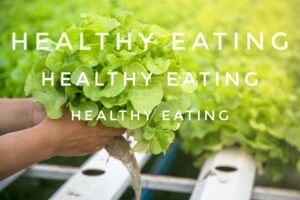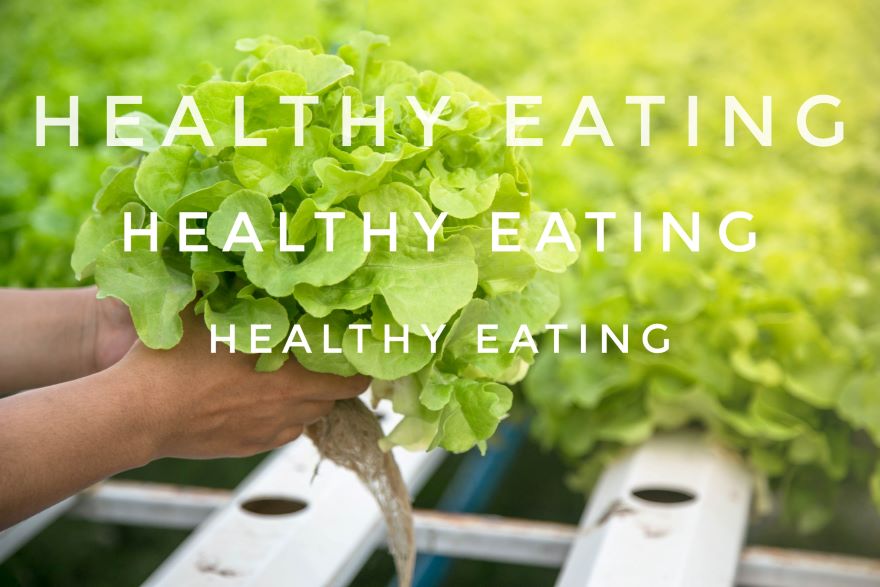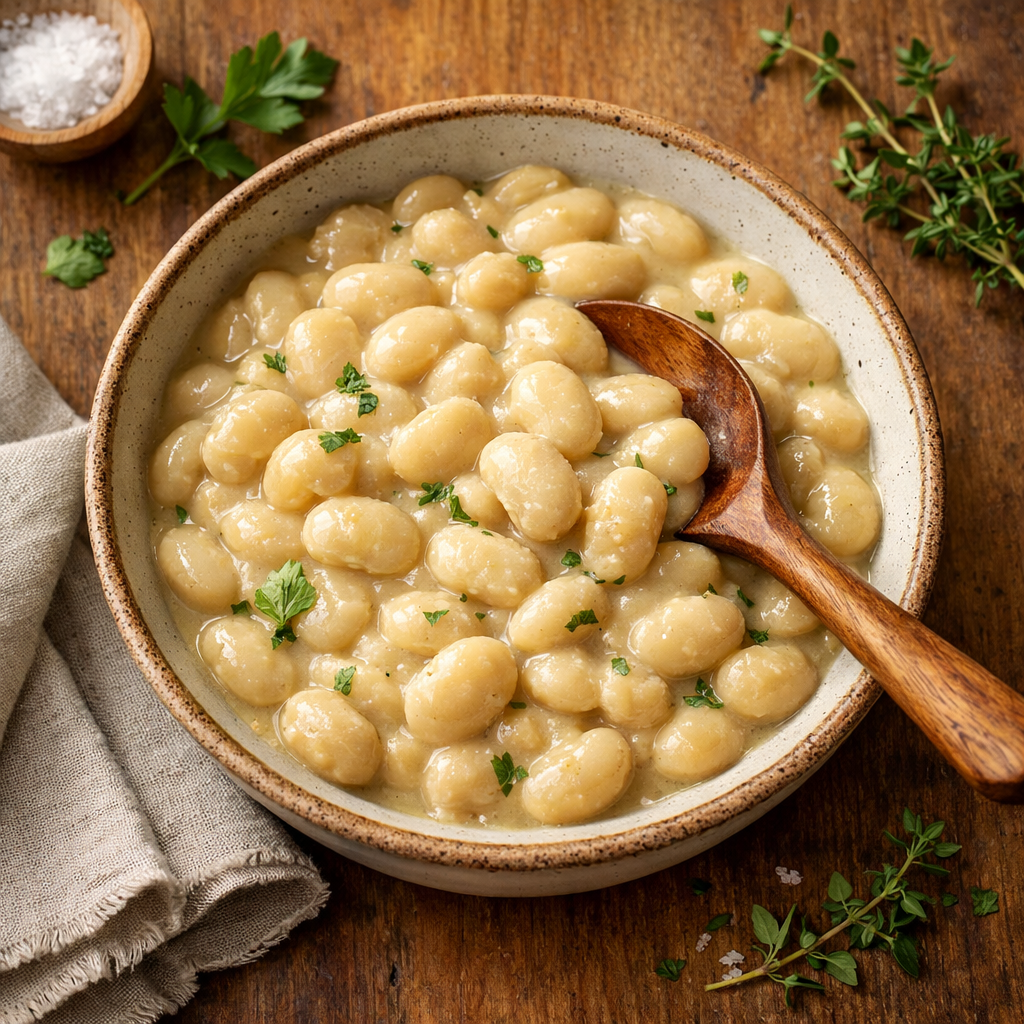Eating to live transcends the basic act of consuming food to satisfy hunger—it involves understanding the impact of nutrition on health and longevity. My journey into this approach began with a desire to optimize my well-being through dietary choices. By focusing on nutrient-rich foods, I aim to enhance my mental clarity, physical vigor, and overall life expectancy. This method is more than a diet; it’s a sustainable lifestyle that emphasizes the importance of what we put on our plates with the goal of preventing illness and extending life.

Over time, I’ve learned that a plant-based diet, abundant in fruits, vegetables, and whole grains, not only reduces the risk of chronic diseases but also supports a healthy weight management. Swapping processed foods for whole foods could significantly impact health by increasing nutrient intake and reducing exposure to additives. Proper meal planning, incorporating a variety of nutrient-dense foods, ensures that my body receives what it needs to function optimally. While the transition requires an adjustment period, the benefits of increased energy and improved health are compelling motivators.
Key Takeaways
- A nutrient-dense diet enhances overall well-being and longevity.
- Plant-based, whole foods are foundational in the Eat to Live approach.
- Replacing processed foods with whole options is crucial for good nutrition.
Understanding Nutrition
In understanding how to eat to live, it’s paramount to comprehend the roles of dietary components and how they contribute to our health. Nutrition forms the foundation of a healthy lifestyle, and grasping its basic principles is crucial.
Macronutrients and Their Roles
Proteins, fats, and carbohydrates are macronutrients essential for my body’s function. Proteins are the building blocks of my muscles and are important for repair and growth. A range of foods provides protein, including meats, dairy products, nuts, and some grains and legumes.
- Proteins: Necessary for cell repair and muscle function.
- Fats: Provide energy, support cell growth, and protect my organs.
- Carbohydrates: Crucial for energy, with fiber playing a key role in digestive health.
Fats should not be feared; they’re vital for energy, cell growth, and protecting my organs. Unsaturated fats, such as those found in avocados and olive oil, are typically considered beneficial, whereas saturated and trans fats should be limited.
Carbohydrates are my body’s main source of energy. I focus on complex carbs like whole grains, which provide fiber, and try to avoid excessive sugary foods.
Vitamins and Minerals: Essential Nutrients
While macronutrients provide me with energy, vitamins and minerals are imperative for disease prevention and optimal health. These micronutrients support numerous bodily functions from bone health to immune response.
- Vitamins: Organic compounds that are crucial in small amounts for diverse functions in my body.
- Minerals: Inorganic elements that help in processes such as bone formation, nerve function, and blood clotting.
For instance, vitamin C found in citrus fruits is essential for my immune system and skin health, while calcium, a mineral, is necessary for strong bones and teeth. I ensure my diet includes a variety of fruits and vegetables to meet my need for these essential nutrients.
Incorporating foods rich in fiber, such as whole grains, can significantly benefit my digestive system and may help prevent chronic diseases. Understanding the impact of proper nutrition on my overall health is critical, and integrating a balance of these elements into my daily diet contributes to a long and healthy life.
Principles of the Eat to Live Diet

The Eat to Live Diet fundamentally revolves around maximizing nutrient intake per calorie consumed, advocating a diet rich in plant-based foods.
Food Choices for Longevity
I focus on whole, unprocessed foods when choosing meals for longevity. Fruits and vegetables are my staples, taking up a large part of my plate. Specifically, I consume a variety of colorful, nutrient-dense options that include leafy greens, berries, and cruciferous vegetables. Legumes such as beans, lentils, and chickpeas provide essential protein and fiber, and are a regular part of my diet. I include seeds and nuts, in moderation, for their healthy fats. Evidence suggests that choices aligning with a healthy eating index are linked to better mental health among populations like the elderly, indicating the broader benefits of such a diet.
Understanding Nutrient Density
Nutrient density is the key to the Nutritarian Diet; I select foods that offer the most vitamins, minerals, and phytonutrients per calorie. Leafy greens and cruciferous vegetables like kale and broccoli are among the most nutrient-packed foods I consume. Fruits like berries provide antioxidants without excessive sugar. In the context of grains, I choose whole grains over refined ones, as they retain their nutritional content. Nuts and seeds are included for their nutrient density, particularly with regards to essential fatty acids and minerals. I pay attention to foods’ nutrient profiles, aiming to get the most health benefits from each calorie.
Benefits of Plant-Based Eating
Adopting a plant-based diet has substantial impacts on health, particularly concerning heart disease and weight loss. It involves consuming nutrient-dense foods and reducing animal product intake.
Heart Health and Weight Loss
A plant-based diet is rich in vegetables, fruits, whole grains, beans, legumes, and nuts—foods known for supporting heart health. These foods naturally offer lower cholesterol and saturated fats while providing ample fiber, which can enhance blood pressure regulation and improve heart health. The inclusion of high-quality plant foods is positively associated with a reduced risk of death from cardiovascular diseases.
Regarding weight loss, plant-based diets help by offering lower calorie options with higher nutrient density. Switching to more plant-based meals can contribute to maintaining a healthy weight through increased fiber content, which promotes satiety and reduces overall calorie intake.
Prevention of Chronic Diseases
Chronic diseases such as diabetes and cancer are influenced by diet. Consuming a diet centered around whole, unrefined plants can improve insulin sensitivity and aid in weight management, which are crucial factors in diabetes prevention and management. When it comes to prevention, plant-based diets are also correlated with a lower incidence of certain types of cancer, thanks to an abundance of antioxidants, phytochemicals, and fiber found in plant foods.
Regular intake of these nutrient-dense, plant-based foods helps diminish the stress and negative affect associated with unhealthy eating patterns. Engaging in a healthy diet creates a positive feedback loop for physical activity and healthy eating, contributing further to the prevention of chronic diseases and fostering an overall healthier lifestyle.
Addressing Common Dietary Concerns

Making informed choices about what we eat is crucial. Here, I’ll discuss how to tackle some common dietary concerns that people face.
Protein and Plant-Based Diets
When embracing a plant-based diet, obtaining adequate protein is often a concern. However, it’s entirely possible to meet protein needs with plant sources. Foods like tofu and beans are excellent providers of protein. For instance, a serving of tofu can deliver about 8 grams of protein, which is essential for muscle repair and growth.
Balancing Omega Fats
Balancing fats, particularly omega-3 and omega-6, is important since they play significant roles in heart health and inflammation. To ensure an appropriate balance, I focus on including various sources of omega-3 fats in my diet, found in foods like flaxseed oils and fatty fish. Limiting the intake of processed oils high in omega-6 can also help maintain this balance.
Managing Blood Sugar and Carbohydrates
Controlling blood sugar is key, especially to prevent or manage diabetes. I prioritize complex carbohydrates such as whole grains over simple sugars to avoid spikes in blood sugar. Regular monitoring and thoughtful consumption of carbohydrates ensure that my blood sugar levels remain stable throughout the day.
Whole Foods Versus Processed Foods
When we talk about how to eat to live, we’re often weighing the benefits of whole foods against the detriments of heavily processed foods. Whole foods provide essential nutrients as nature intended, while processed foods often come with added sugars and sodium, which can negatively affect our health.
Reading Labels and Ingredient Lists
When I shop for food, I make a point to read labels and ingredient lists carefully. This is key to understanding what’s in my food. A good rule of thumb I follow is to look for a short list of recognizable ingredients. This typically indicates that the food is minimally processed. For example, a bag of frozen peas should just list peas, and perhaps some salt, but not much more than that.
The Problem with Processed Foods
Processed foods have been altered significantly from their natural state, often for convenience or preservation. This means they can contain an excess of sugar, sodium, and other additives. Eating these regularly can lead to various health issues. Research I’ve read about suggests that such foods might contribute to obesity, diabetes, and heart disease. Therefore, in my diet, I limit my intake of highly processed foods, paying special attention to those with long ingredient lists that include things I don’t recognize as whole foods.
Meal Planning and Prep
In my journey to eat to live, I’ve learned that meal planning and prep are vital for maintaining a nutritious diet that sustains and energizes. It’s not just about what you eat, but how you prepare for it that makes a difference.
Creating a Balanced Meal Plan
I focus on including a variety of food groups in my meal plan to ensure I’m getting a balanced diet. This generally involves a mix of macronutrients – proteins, fats, and carbohydrates – alongside a plethora of vitamins and minerals.
For Instance:
- Protein: plant-based options like beans and lentils
- Fats: healthy fats such as olive oil or avocados
- Carbohydrates: whole grains, such as brown rice or quinoa
- Fruits & Vegetables: a rainbow of colors to maximize nutrient intake
Shopping for Health
When I hit the grocery store, I stick to my shopping list to avoid impulse buys. My list is usually categorized by department to make my shopping trip more efficient.
Pro Tip: Shop the perimeter of the store first, where fresh foods like fruits, vegetables, and whole foods are often located. I always look for seasonal produce as they tend to be fresher and more affordable.
Cooking Tips and Tricks
Time in the kitchen is where meal prep becomes practical. I’ve learned several tricks to make cooking easier:
- Batch Cooking: Preparing larger quantities of staples like grains and legumes to use throughout the week saves time and energy.
- One-Pot Meals: Recipes that require just one pot or pan can be a game-changer for both cooking and cleanup.
- I often use cooking methods that retain nutrients, like steaming or sautéing in a small amount of oil, rather than frying.
- Investing in quality containers that keep food fresh is crucial. Glass containers are my go-to for their durability and ease of cleaning.
By focusing on these strategies, I’m able to maintain a lifestyle that prioritizes my health and well-being through thoughtful meal planning and prep.
Recipes and Cooking Ideas
When I’m planning my meals for a nutritious lifestyle, I focus on ingredient quality and the balance of macronutrients. My goal is to create meals that provide energy, enhance focus, and promote relaxation throughout the day.
Breakfast Options for Energy
For breakfast, I ensure my dishes are high in protein and fiber to kickstart the day with plenty of energy. Here’s a quick recipe I regularly enjoy:
- Overnight Oats & Berries
Soak 1/2 cup of oats with almond milk overnight. In the morning, top it with fresh berries and a sprinkle of chia seeds for an extra boost.
Another energizing option:
- Spinach & Mushroom Omelette
Whisk 2 eggs, pour them into a pan, and add a handful of spinach and sliced mushrooms. Cook until set for a protein-rich start.
Lunch Ideas for Sustained Focus
Maintaining focus throughout the day requires foods that have a low glycemic index to prevent blood sugar spikes. My go-to lunch often includes:
- Super Salad
Combine mixed greens, chickpeas, a variety of colorful vegetables, a handful of nuts, and dress with a homemade lemon vinaigrette. Check out this nutritarian recipe for inspiration.
On colder days, I might opt for:
- Lentil Soup
Simmer lentils with vegetable broth, carrots, onions, and seasonings until tender. It’s filling and keeps me focused till dinner.
Dinner Recipes for Relaxation
Dinner time is when I like to wind down, so I opt for meals that are comforting yet light enough to ensure a good night’s sleep. A favorite is:
- Grilled Salmon with Asparagus
Season a salmon fillet and grill it alongside asparagus spears. Rich in omega-3 fatty acids, it supports relaxation and health.
Alternatively, I might prepare:
- Quinoa & Roasted Vegetables
Toss cooked quinoa with a medley of roasted vegetables such as bell peppers, zucchini, and eggplant. It’s a simple, satisfying end to my day.
Snacks and Desserts

When I focus on maintaining a healthy lifestyle, my snack and dessert choices play a significant role. I ensure that the options I have are both satisfying and nutritious, incorporating items like nuts, fresh fruits, and berries.
Healthy Snacking Habits
I am mindful to incorporate snacks that provide a balance of proteins, fats, and carbohydrates. Here’s a list of my go-to healthy snacks:
Nuts: A handful of unsalted almonds or walnuts serve as a great source of omega-3 fatty acids.
Dried Fruit: When I choose dried fruit, I opt for options with no added sugars, like raisins or dried apricots, which provide a concentrated source of nutrients and a quick energy boost.
Fresh Fruits and Berries: Snacking on apple slices, banana, or a cup of mixed berries gives me fiber and antioxidants, important for my overall health.
I often prep these snacks ahead of time so they’re easy to grab on the go.
Indulging Without Guilt
Even when living a health-conscious life, I believe it’s important to indulge a little. For dessert, I follow a few simple rules:
Portion Control: By enjoying desserts in small amounts, I avoid overindulging. A square of dark chocolate can satisfy my craving without compromising my diet.
Natural Sweetness: I often turn to desserts that highlight the natural sweetness of their ingredients, like a fruit salad made with in-season fruits or a homemade smoothie with berries.
By choosing desserts that are not only delicious but also made with wholesome ingredients, I can indulge without feeling guilty.
Sustainable Eating

Sustainable eating is about making food choices that are beneficial to both our health and the environment. I focus on selecting foods that minimize environmental damage while providing nutritional benefits.
Environmental Impact of Food Choices
I understand that each item on my plate carries an environmental cost. The production, processing, and transportation of food all contribute to greenhouse gas emissions and resource depletion. To reduce my environmental footprint, I choose diets that emphasize plant-based foods, as these generally require less energy, water, and land compared to animal-based products. For instance, I opt for meals rich in vegetables, fruits, legumes, and grains, which are comprehensively detailed in Harvard’s Healthy Eating Plate.
Here’s a brief overview of the environmental impact of different food types:
- Meat (Beef, Pork, Lamb): High greenhouse gas emissions, significant water and land usage
- Poultry: Lower emissions than red meat, moderate water usage
- Fish: Variable impact; sustainably farmed or wild-caught varieties preferable
- Plant-based Proteins (Beans, Lentils): Low emissions, low water, and land usage
Local and Seasonal Eating
I advocate for the consumption of local and seasonal foods to enhance sustainability. By choosing local food, I support the local economy and reduce the carbon footprint created by long-distance food transport. I frequent farmers’ markets and subscribe to community-supported agriculture (CSA) programs. Eating seasonally also ensures that I’m enjoying fruits and vegetables at their peak flavor and nutrition, while they require less human intervention to grow.
Why Local?
- Reduces transport emissions
- Supports local farmers
- Often fresher and more nutritious
Why Seasonal?
- Less need for artificial heating or lighting for growth
- Encourages diverse crop rotations
- Aligns with natural growing cycles
My commitment to sustainable eating isn’t just a personal choice; it’s a step towards a healthier planet for future generations.
Frequently Asked Questions
In this section, I’ll address some of the most common inquiries regarding the ‘How to Eat to Live’ approach to nutrition, aimed at providing clarity on its principles and practical application.
What are the basic principles outlined in ‘How to Eat to Live’?
The ‘How to Eat to Live’ diet is built on the foundation of consuming nutrient-dense, plant-based foods while minimizing the intake of processed and unhealthy foods. The focus is on maximizing the nutritional value per calorie consumed.
Where can I find a summary of the key concepts from ‘How to Eat to Live’?
A comprehensive summary of the ‘Eat to Live’ diet can be found on Healthline, detailing the diet’s emphasis on whole, nutrient-rich foods and its potential benefits for overall health and weight management.
Can you provide a list of recommended foods from ‘How to Eat to Live’?
Yes, the ‘Eat to Live‘ diet recommends a list known as “G-BOMBS,” which stands for Greens, Beans, Onions, Mushrooms, Berries, and Seeds. These foods are highly nutritious and are encouraged as staples in the daily diet. More about this can be referenced on wikiHow Health.
What steps should be taken to gradually resume eating after a period of fasting?
After fasting, it’s important to reintroduce foods slowly, starting with easily digestible items such as fruits, vegetables, or broths, and then gradually including more complex foods like whole grains and proteins over a few days to allow the digestive system to adjust.
How can one maintain consistency and motivation for healthy eating?
Maintaining consistency and motivation involves setting clear, achievable goals, preparing meals in advance, and understanding the substantial health benefits of this diet. Regularly educating oneself about nutrition and celebrating small successes can sustain motivation over the long term.
What additional resources or versions, such as audiobooks or pdfs, are available for ‘How to Eat to Live’?
For those looking for different formats of the ‘Eat to Live’ guidelines, there are audiobooks and digital versions such as PDFs available. These formats make the information accessible to a wider audience, catering to different preferences and learning styles.

*We may earn a commission for purchases made using our links. Please see our disclosure to learn more.



